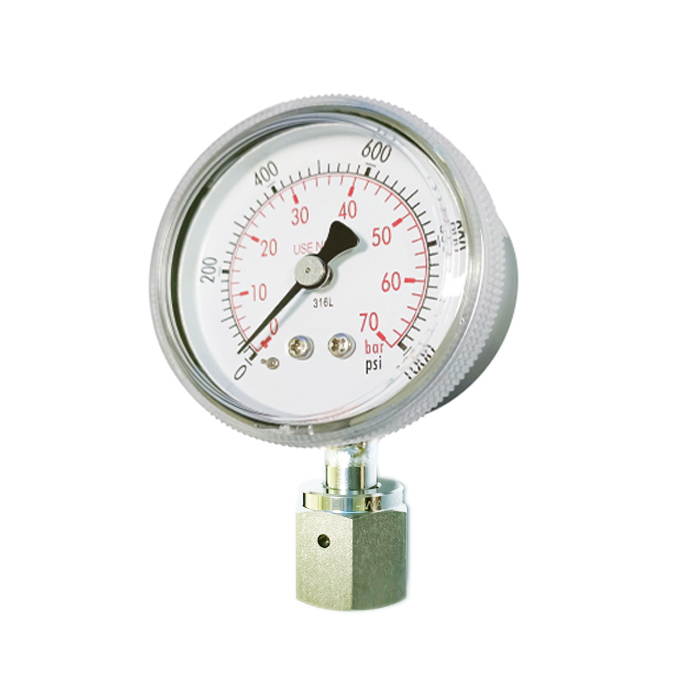
Aug . 14, 2024 11:11 Back to list
Bourdon Tube Differential Pressure Gauge Manufacturers and Exporters for Accurate Measurement Solutions
The Role of Differential Pressure Gauge Bourdon Tubes in Industrial Applications
In the realm of industrial measurement and monitoring, maintaining optimal performance and safety standards is paramount. One of the essential devices employed for this purpose is the differential pressure gauge, particularly those utilizing Bourdon tubes. These instruments are crucial for a variety of applications, from water treatment plants to chemical processing facilities.
Understanding Differential Pressure Gauges
Differential pressure gauges are designed to measure the difference in pressure between two points within a system. This function is vital in processes where pressure differentials determine flow rates, filter conditions, or leak detection. Bourdon tube differential pressure gauges operate based on the mechanical principles of the Bourdon tube, which deforms in response to pressure changes, translating that deflection into a readable measurement.
The Bourdon Tube Mechanism
The Bourdon tube is a C-shaped, hollow metallic tube that is closed at one end. When pressure is applied to the open end, the tube tends to straighten. This straightening is proportional to the pressure exerted, allowing for precise measurement. The motion of the tube is linked to a pointer that moves along a calibrated scale, providing a direct reading of the pressure differential. The simplicity and reliability of this mechanical design make Bourdon tube gauges a favored choice in many industries.
Advantages of Differential Pressure Gauge Bourdon Tubes
1. Accuracy and Reliability Bourdon tube gauges are known for their accuracy, often within ±1% of the full scale. Their mechanical nature eliminates the need for electricity, which is advantageous in hazardous environments.
differential pressure gauge bourdon tube exporter

2. Wide Range of Applications These gauges can be utilized in various applications including HVAC systems, filtration monitoring, and level measurement in tanks. Their versatility ensures they can adapt to different pressure ranges and environments.
3. Durability Constructed from robust materials such as brass, stainless steel, or plastic, Bourdon tube gauges can withstand harsh conditions, including extreme temperatures and corrosive environments. This durability enhances their lifespan and reliability.
4. Low Maintenance With few moving parts and no electronic components, Bourdon tube pressure gauges require minimal maintenance, making them a cost-effective choice for many operations.
Exporting Bourdon Tube Differential Pressure Gauges
As industries continue to expand globally, the demand for high-quality measurement devices like differential pressure gauges has increased. Exportation of Bourdon tube differential pressure gauges is seeing significant growth, with manufacturers focusing on meeting international standards and certifications to appeal to a broader market. Key regions for the export of these gauges include Europe, North America, and Asia-Pacific, where rigorous quality control measures and precision engineering are essential.
Conclusion
Differential pressure gauge Bourdon tubes play a critical role in ensuring safe and efficient operations across various industries. Their accuracy, durability, and low maintenance requirements make them an indispensable tool for monitoring and controlling processes. As global industries continue to evolve, the demand for reliable measurement solutions will drive innovation and export opportunities in this sector. For manufacturers and exporters, understanding the evolving needs of their customers will be crucial to success in the competitive landscape of industrial measurement devices. With the ongoing advancements in technology and a keen focus on quality, Bourdon tube differential pressure gauges are poised to remain a cornerstone in the field of pressure measurement.
-
Bourdon-Type Differential Pressure Gauges High Accuracy & Affordable Pricing
NewsMay.22,2025
-
Vacuum Differential Pressure Gauges High-Precision Solutions & Quotes
NewsMay.22,2025
-
Durable Diaphragm Pressure Elements High Accuracy & Custom Quotes
NewsMay.22,2025
-
AG Precision Pressure Gauges High Accuracy & Global Exporters
NewsMay.21,2025
-
Ashcroft Diaphragm Pressure Gauges Precision & Durability
NewsMay.21,2025
-
Micro Differential Pressure Gauges High-Precision & Compact Solutions
NewsMay.20,2025
